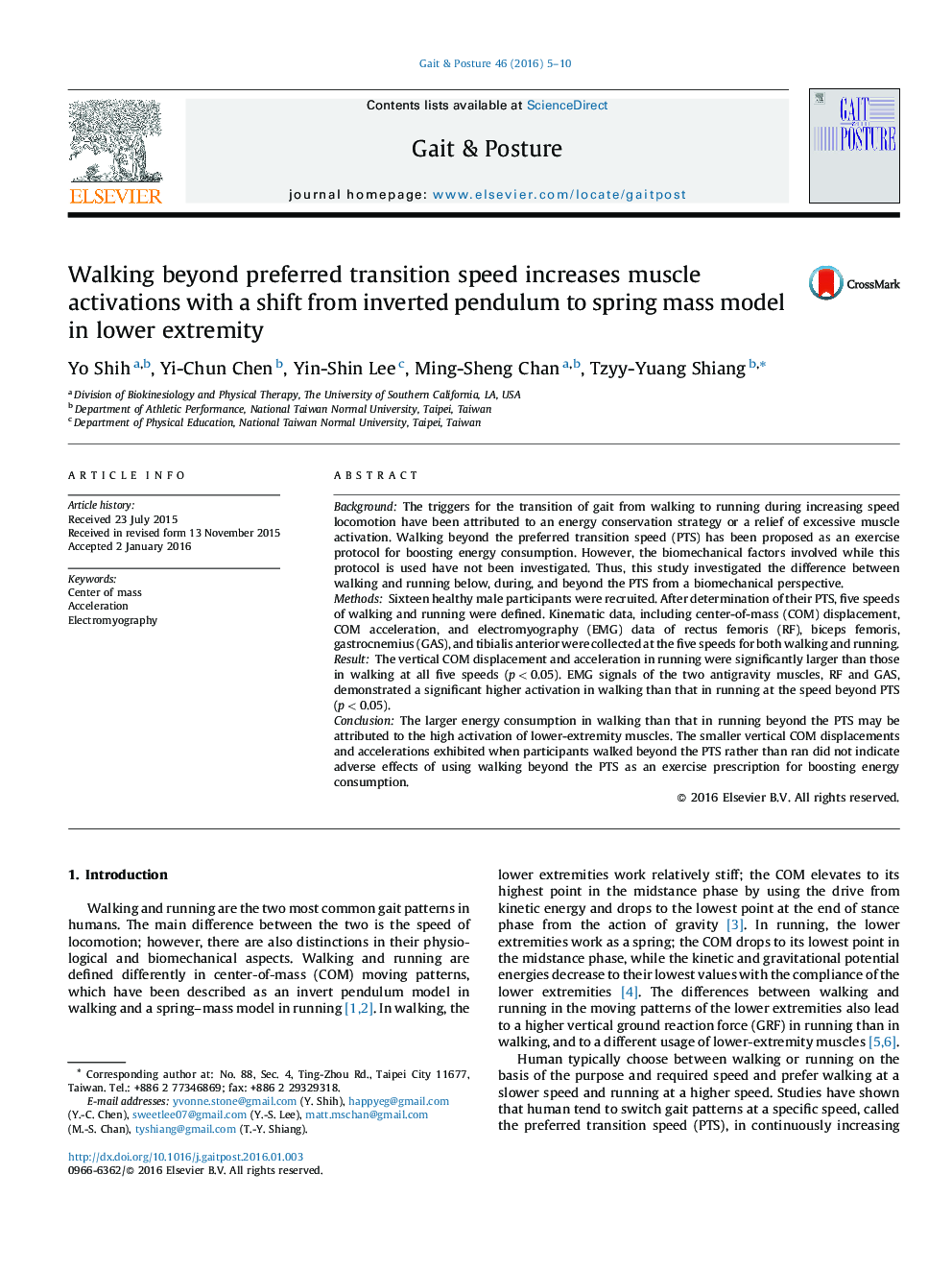| کد مقاله | کد نشریه | سال انتشار | مقاله انگلیسی | نسخه تمام متن |
|---|---|---|---|---|
| 6205779 | 1603849 | 2016 | 6 صفحه PDF | دانلود رایگان |
- In both walking and running, the vertical COM displacements decreased with an increase in speed.
- The muscle activity of lower extremity was smaller in walking than that in running at speeds below the PTS.
- The muscle activity of lower extremity was larger in walking than that in running at speeds beyond the PTS.
- The boost in energy consumption for walking beyond the PTS may be attributed to the activation of lower-extremity muscles.
BackgroundThe triggers for the transition of gait from walking to running during increasing speed locomotion have been attributed to an energy conservation strategy or a relief of excessive muscle activation. Walking beyond the preferred transition speed (PTS) has been proposed as an exercise protocol for boosting energy consumption. However, the biomechanical factors involved while this protocol is used have not been investigated. Thus, this study investigated the difference between walking and running below, during, and beyond the PTS from a biomechanical perspective.MethodsSixteen healthy male participants were recruited. After determination of their PTS, five speeds of walking and running were defined. Kinematic data, including center-of-mass (COM) displacement, COM acceleration, and electromyography (EMG) data of rectus femoris (RF), biceps femoris, gastrocnemius (GAS), and tibialis anterior were collected at the five speeds for both walking and running.ResultThe vertical COM displacement and acceleration in running were significantly larger than those in walking at all five speeds (p < 0.05). EMG signals of the two antigravity muscles, RF and GAS, demonstrated a significant higher activation in walking than that in running at the speed beyond PTS (p < 0.05).ConclusionThe larger energy consumption in walking than that in running beyond the PTS may be attributed to the high activation of lower-extremity muscles. The smaller vertical COM displacements and accelerations exhibited when participants walked beyond the PTS rather than ran did not indicate adverse effects of using walking beyond the PTS as an exercise prescription for boosting energy consumption.
Journal: Gait & Posture - Volume 46, May 2016, Pages 5-10
